|
|
Post by bertone on Oct 26, 2022 5:03:04 GMT -5
Yes, more Panthers please! Would love a J72 or DeVille in 1:43 by Matrix or similar. NEO did a lovely Kallista and Bizarre did the SIX, both of which reside here.
Was a fan of both the J72 and DeVille as a kid. Yes, more Panthers please but for me the first choice would be the Solo. Love that Healey and congrats for getting such a wanted model for a good price. |
|
oldirish33
Member
"All Jaguars run on Guinness!"
Posts: 3,349
|
Post by oldirish33 on Oct 26, 2022 12:04:38 GMT -5
Wacky's Aston - British chassis and mechanicals, Italiian coachwork and interior, final assembly in the USA; the Anglo-Italian marriage was the idea of S.H. "Wacky" Arnolt. a wealthy Chicago industrialist. Arnolt knew that there was a market for coach built cars among his wealthy clientele and he had enough cheek to promote them as built in America. Through a chance meeting, he developed a relationship with Bertone, which helped save the struggling Italian firm from insolvency. If you are a fan of Bertone designed cars, especially from the late 1950's, 1960's & 70's and beyond, give a tip of the hat to Wacky Arnolt without whom those cars might not exist. 1953 Aston Martin DB 2/4 Bertone Coupe - Martix
Stanley “Wacky” Arnolt was an American rags to riches success story, typical of many that started with almost nothing and built an industrial empire. A self-made millionaire, Arnolt amassed his fortune in manufacturing, aided by contracts in WWII. Based in Chicago, Arnolt began importing foreign cars into the mid-west in the 1950’s. A meeting with Giovanni Bertone at the Turin Motor Show in 1952, resulted in a collaboration that saw Bertone bodies on four different British manufacturers cars between 1953-58. Bertone employed some of the best styling talent of the time in the pens of Franco Scaglione, Giovanni Michelotti and of course, Nuccio Bertone himself. 
Wacky Arnolt saw the sales potential for coachbuilt cars he imported to his wealthy customers. He collaborated with Bertone to produce the Arnolt-MG, Bristol, Aston Martin and Bentley. While the cars were never made in great numbers, it was the boost Bertone needed to keep their doors open in the lean years that followed WWII. One of the best results of the Arnolt-Bertone collaboration is the Aston Martin DB2/4 Bertone Coupe. Arnolt had seven Bertone bodies Aston Martins made using the 140 BHP, 2.9L DOHC six-cyl. Engine and chassis of the DB2/4. Seven bodies were made, of which this was the only coupe, the rest open cars. The car is a great Anglo-Italian marriage of British mechanicals and 1950s Italian elegance and coachbuilding skill. 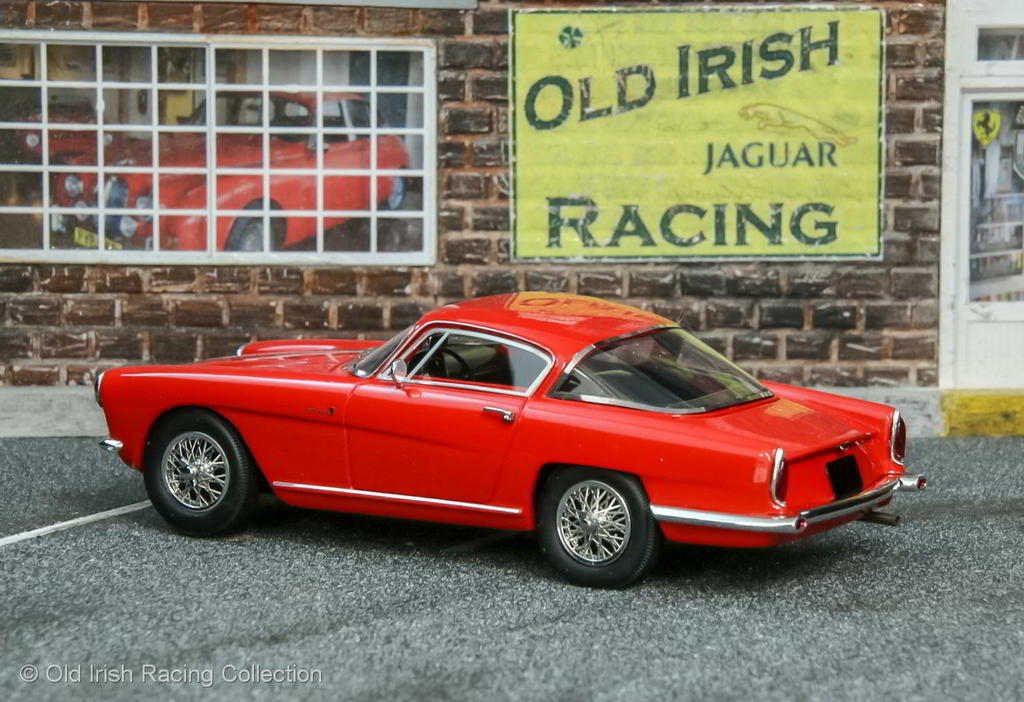
Here is the Bertone Coupe next to a more conventionally styled DB2/4 Notchback Coupe. Hard to imagine they are cars of the same era. The Bertone Coupe to me looks like a car of the 1960's rather than the early 1950's. In Bertone's styling, you can see cues that were to come on some of its later bodies Alfa Romeos and Maserati's. Another nice coach work model by Matrix. 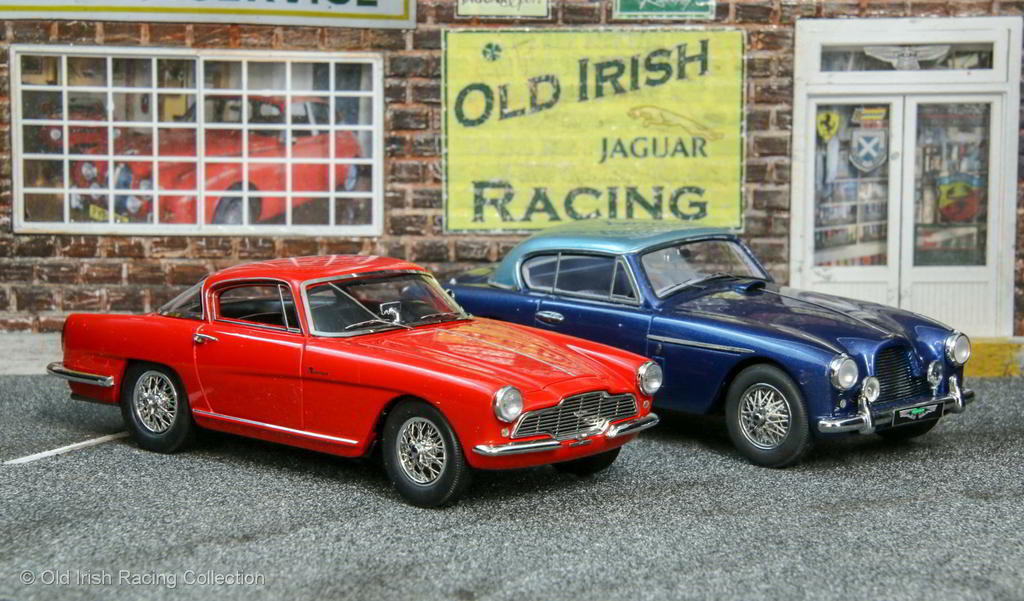
|
|
|
|
Post by Tom on Oct 26, 2022 13:42:59 GMT -5
That is wonderful! I assume the red is historically correct, but I would love to see it in a metallic.
|
|
|
|
Post by Scalainjridesagain on Oct 26, 2022 14:10:06 GMT -5
That's a handsome looking car. A fine addition
|
|
|
|
Post by Alfaholic on Oct 26, 2022 23:07:07 GMT -5
As you say, streets ahead of the A-M in the looks department. Even the grille looks more like it was taken from a '70s or '80s Aston. Nice work by Matrix.
|
|
|
|
Post by reeft1 on Oct 27, 2022 1:11:09 GMT -5
As you say, streets ahead of the A-M in the looks department. Even the grille looks more like it was taken from a '70s or '80s Aston. Nice work by Matrix. Couldn’t have said it better myself |
|
|
|
Post by DeadCanDanceR on Oct 27, 2022 1:46:14 GMT -5
Gorgeous looking model! There’s lots of Franco Scaglione’s flair in that Aston!  |
|
|
|
Post by jager on Oct 27, 2022 4:34:39 GMT -5
The comparison picture at the end of your post really says it all Jerry. As others have said, it looks light years ahead of its sibling and Matrix have done a great job to reproduce this.
|
|
|
|
Post by bertone on Oct 27, 2022 10:59:56 GMT -5
A difficult decision! I went for the white because it's the colour I associate with this car but it does look really nice in gold.  |
|
LM24HRS
Member
Paul - "Collecting Motorsport in Miniature; for the passion and its history".
Posts: 552
|
Post by LM24HRS on Oct 28, 2022 12:23:09 GMT -5
Jerry. Just going back to your LSR AH and chat. By shear coincidence try and get hold of the new Dec issue of MotorSport. Turn to page 104. "The fast show" enjoy.
|
|
oldirish33
Member
"All Jaguars run on Guinness!"
Posts: 3,349
|
Post by oldirish33 on Nov 2, 2022 13:18:47 GMT -5
That is wonderful! I assume the red is historically correct, but I would love to see it in a metallic. Yes Tom, that is its color then and now. Your comment on metallic paint had me do a little research on when metallic paint first came to be and more specifically, when European cars started appearing in metallic paints. Here is an oversimplification. My theory was that the later was not until the 1960's and found that the former was a custom paint on coach built USA cars going back to the 1930's. Hotrodders in the US experimented with metallic paint in the 1950's, but it was very laborious process and not suited for mass production techniques at the time. European and US manufactures also used different types of paint, lacquer in the US and enamel in Europe. I remembered Austin Healey using a metallic based paint in the mid-1950's (ice blue) and that it was a special process, but didn't immediately find the reference I was looking for. Opalescent paints were an early type of metallic and Jaguar I know used these in the early 60's. I could not find a date for when metallic paints as we know them today became more common. If you do a search on the history of automotive paint, there is a great deal of information, some conflicting and most with out specific timelines. I did find it interesting that early automotive paint contained tar and/or asphalt to reduce cracking and that is why early cars were mostly in dark colors. This is all probably more than you cared to know.  That's a handsome looking car. A fine addition As you say, streets ahead of the A-M in the looks department. Even the grille looks more like it was taken from a '70s or '80s Aston. Nice work by Matrix. As you say, streets ahead of the A-M in the looks department. Even the grille looks more like it was taken from a '70s or '80s Aston. Nice work by Matrix. Couldn’t have said it better myself Thanks gents! The grille shape was introduced on the 1952 DB3 and was kept as a design cue for most production and race cars to this day. Gorgeous looking model! There’s lots of Franco Scaglione’s flair in that Aston!  Yes, it was his design of the Arnolt Barchettas and cabriolets which were incorporated into the coupe. The comparison picture at the end of your post really says it all Jerry. As others have said, it looks light years ahead of its sibling and Matrix have done a great job to reproduce this. Its interesting how older designs which are incorporated in new cars makes us think the original design was ahead of its time, rather than the newer cars have not really progressed that much.  A difficult decision! I went for the white because it's the colour I associate with this car but it does look really nice in gold.  I am assuming you are referring to the Jaguar Ascots and yes white I think is best. Jerry. Just going back to your LSR AH and chat. By shear coincidence try and get hold of the new Dec issue of MotorSport. Turn to page 104. "The fast show" enjoy. Thanks, I will look for it. Unfortunately we no longer have newstands which sold magazines like Motorsport, so I have to probably by it online. |
|
oldirish33
Member
"All Jaguars run on Guinness!"
Posts: 3,349
|
Post by oldirish33 on Nov 2, 2022 13:34:26 GMT -5
Jaguar Addict! - Jaguar models are the crack cocaine to my model car addiction and I can't resist adding to my collection, even when I already have representatives of the models already.  In this case, being discounted and with free shipping was too much for my weak resistance to miniature Jaguars. In this case, both are interesting and notable competition cars. The Jaguar MkV is often overshadowed by the XK120 launched at the same time in 1948. However, the MkV had the advantage of XK120 steering and suspension, which started/enhanced the tradition of sporting Jaguar saloons. The Irish connection was an added bonus! The 3.4 Saloon is a part of a trio of notable cars by Matrix campaigned by the top Jaguar teams and drivers. Tommy Sopwith is a very familiar name, not only for his Jaguar exploits, but also going back to the early Healey and Austin Healey days. Jaguar MkV - 1951 Monte Carlo Rally - Matrix
The Monte Carlo Rally was only open to touring cars and while Jaguar would have loved to have entered their XK120 which had performed well on other rallys, The MkV saloon was tapped for duty. In 1951, there were half a dozen MkVs entered, with the most competitive coming from Ireland. As in many countries to avoid excessive duty on directly imported cars, Jaguar shipped complete knock down kits of its cars to Ireland. There they were assembled at Frank Cavey and Sons, the Jaguar agent in Dublin. Maurice Cavey was a rally preparation specialist and two standard MKVs were prepared for the Monte Carlo Rally at his shop. Cavey would later prepare a number of successful Irish racing and rally Jaguars. 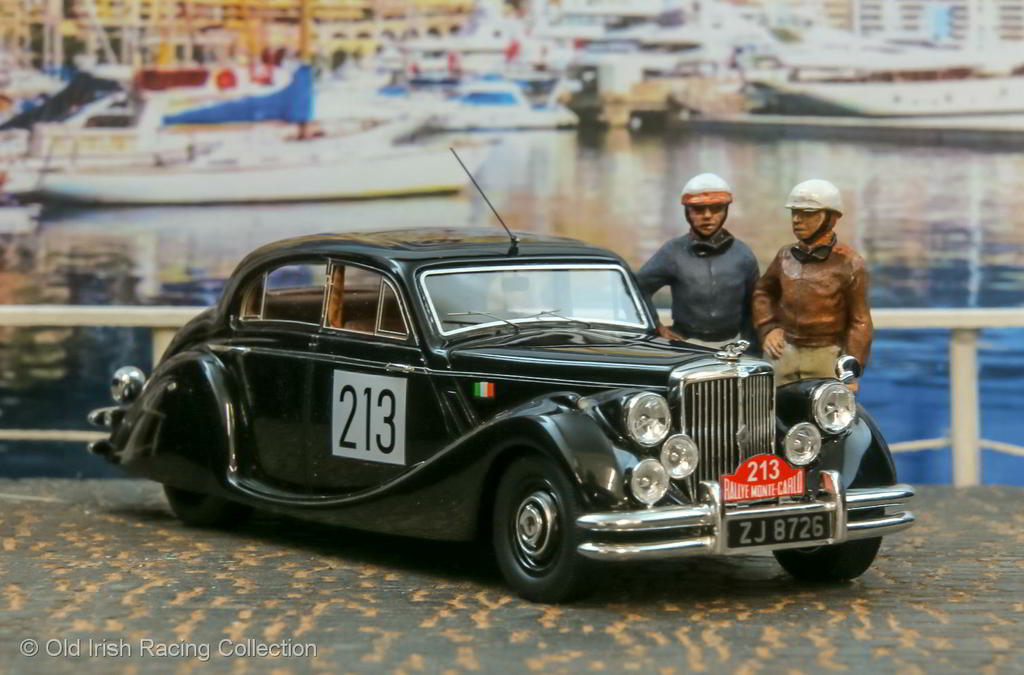 This Jaguar MkV was owned by Norrie Bailey and for the Monte Carlo Rally in 1951, he was joined by Maurice Cavey. The pair set out from Glasgow, one of five departure sites on their 2,000 Km trek south, encountering heavy snows and ice along the way. The MkV with its XK120 front suspension handled very well and was a comfortable ride. Apart from extra spotlights and demisters, and a bit of tuning for extra reliability, the 2.5L six-cylinder car was as delivered. I have not found out exactly where the pair exited the rally, but they were classified 170th of the 362 cars entered. Their sister car also prepared by Cavey finished 3rd overall with Dublin furrier Cecil Ward at the wheel in the car he borrowed from his mother-in-law. 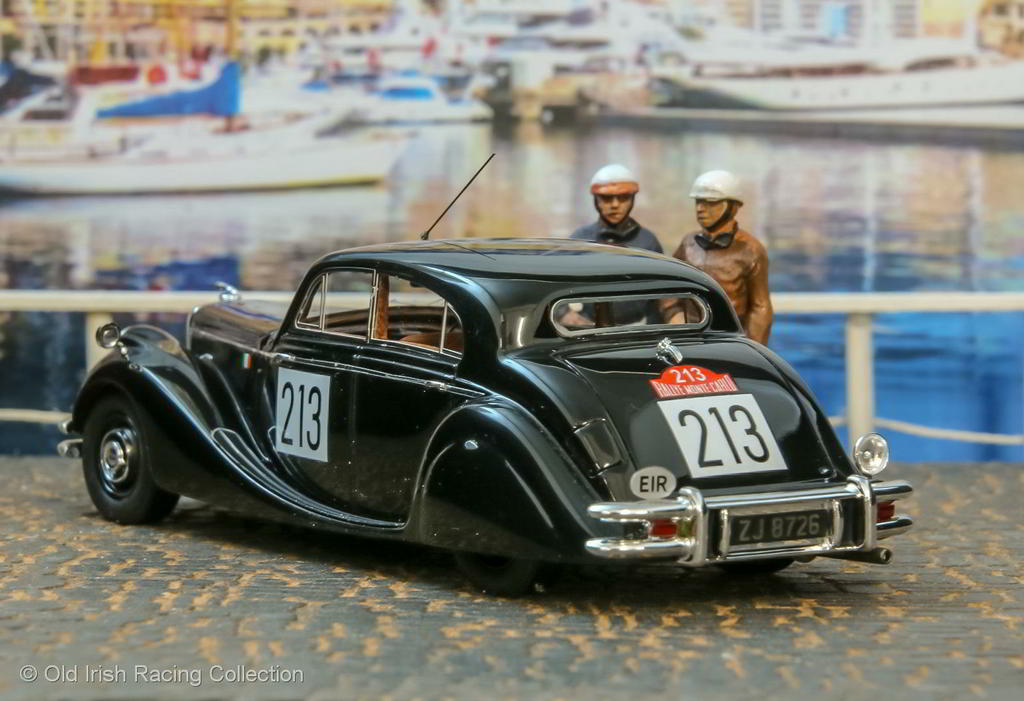 Matrix also make the Irish MkV that finished 3rd at the 1951 Monte Carlo. My resistance to add it to the collection is wavering.   1957 Jaguar 3.4 Saloon - Brand Hatch, 1957 - Matrix 1957 Jaguar 3.4 Saloon - Brand Hatch, 1957 - MatrixSon of famed British aviation pioneer Sir Thomas Sopwith, Tommy Sopwith had the financial means to indulge in auto racing. He had the skill to become one of Englands best amateur drivers after WWII. Named after his fathers racing yacht, Tommy Sopwith created Team Endeavor. Sopwith and Team Endeavor were to become one of the de facto Jaguar factory racing teams in the late 1950s and early 1960s. Jaguar quit active racing in 1956 but kept its competition department which provided valuable assistance to select teams campaigning Jaguar cars. His cars would become some of the most successful Jaguars in privateer hands. 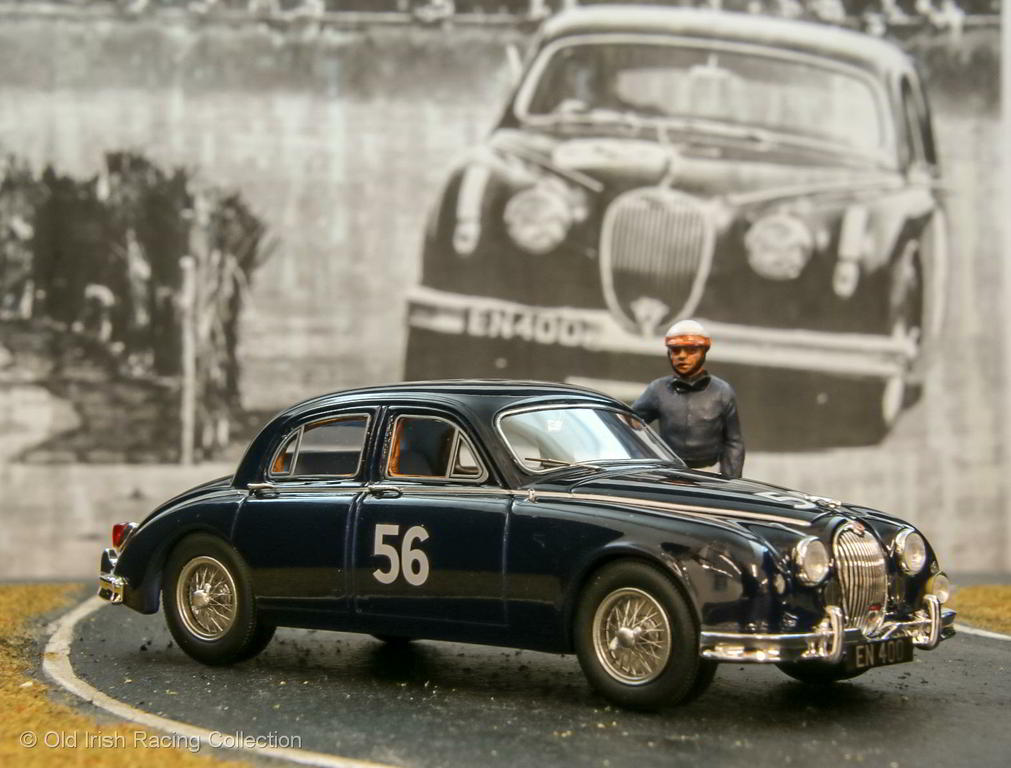 Sopwith campaigned one of the early 3.4 Liter Jaguar saloons and won the first race with the car known as EN400 at the 1957 Boxing Day race for sedans at Brands Hatch. He went on to win the first British Saloon Car Championship race in the car in 1958, in that Championships inaugural season. He won seven more races and his class in the Championship. His epic battle with Mike Hawthorn at Silverstone was one of the highlights of the series. He tied Jack Sears for the overall Championship but lost the title in a ten-lap shoot out to Sears in his Austin A105. Sopwith gave up auto racing for powerboat racing in the early 1960s. A sport where he would also find a great deal of success. 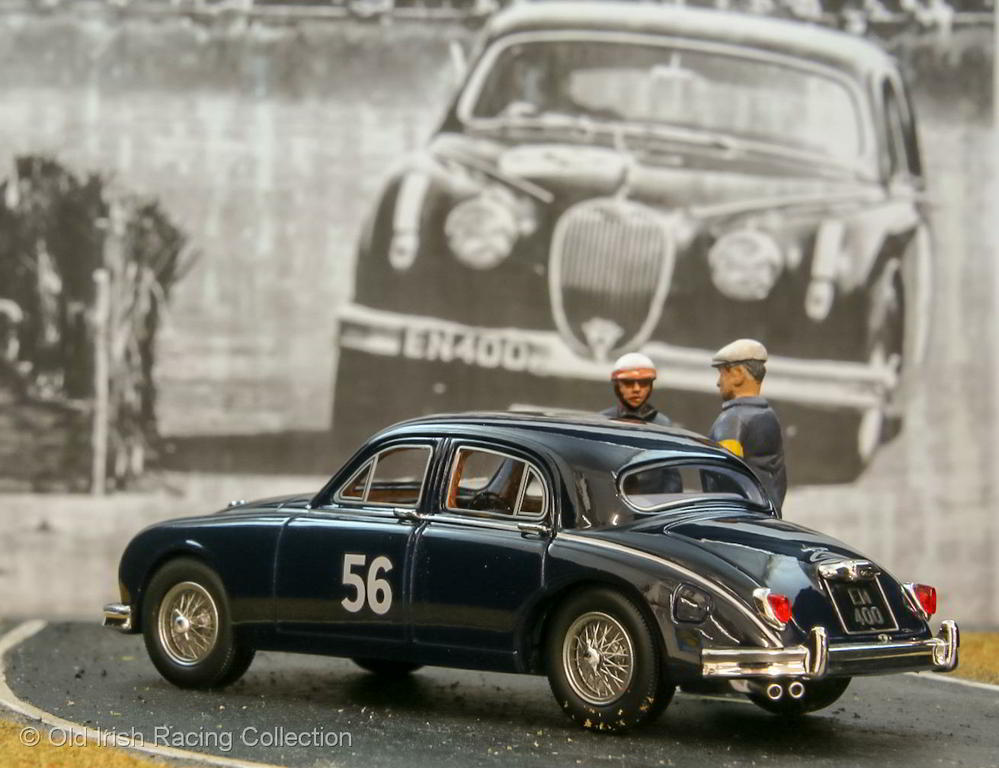 The small Jaguar saloons of Equipe Endeavor in my collection: 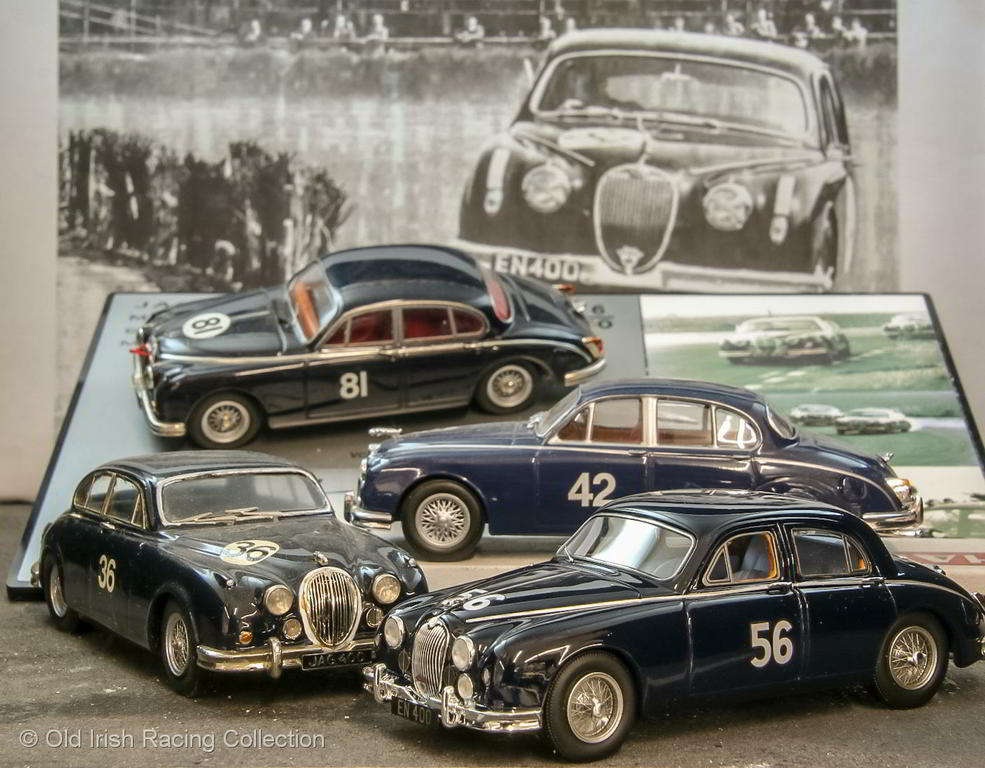
|
|
|
|
Post by Tom on Nov 2, 2022 17:28:11 GMT -5
I saw these on the new announcements list and thought 'I will live vicariously through Jerry'.  Fantastic models, both of them. Love the last shot especially! |
|
|
|
Post by Alfaholic on Nov 2, 2022 19:25:22 GMT -5
I thought that owning an old Jaguar was the antidote to a Jaguar addiction Jerry  (I can say this as an Italian car owner!). The Mark V is not what would normally spring to mind when thinking about a rally car, but they were different times. The 3.4 looks like a proper racer, very flash. I'm guessing that even in the land of Ford and Holden V8s, you are aware that 3.4s and their larger engined cousins won the first four Australian Touring car Championships, from 1960 through to 1963? Back then the Championship was decided in one race only, rather than a full series, but the Jaguars still reigned supreme. |
|
|
|
Post by reeft1 on Nov 3, 2022 1:53:52 GMT -5
Superb additions
|
|